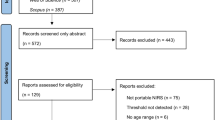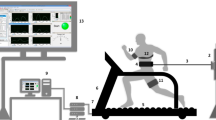Abstract
There is growing interest in resistance training, but many aspects related to this type of exercise are still not fully understood. Performance varies substantially depending on how resistance training variables are manipulated. Fatigue is a complex phenomenon usually attributed to central (neuronal) and/or peripheral (muscular) origin. Cerebral oxygenation may be associated with the decision to stop exercise, and muscle oxygenation may be related to resistance training responses. Near infrared spectroscopy (NIRS) is a non-invasive optical technique used to monitor cerebral and muscle oxygenation levels. The purpose of this review is to briefly describe the NIRS technique, validation and reliability, and its application in resistance exercise. NIRS-measured oxygenation in cerebral tissue has been validated against magnetic resonance imaging during motor tasks. In muscle tissue, NIRS-measured oxygenation was shown to be highly related to venous oxygen saturation and muscle oxidative rate was closely related to phosphocreatine resynthesis, measured by 31P-magnetic resonance spectroscopy after exercise. The test-retest reliability of cerebral and muscle NIRS measurements have been established under a variety of experimental conditions, including static and dynamic exercise. Although NIRS has been used extensively to evaluate muscle oxygenation levels during aerobic exercise, only four studies have used this technique to examine these changes during typical resistance training exercises. Muscle oxygenation was influenced by different resistance exercise protocols depending on the load or duration of exercise, the number of sets and the muscle being monitored. NIRS is a promising, non-invasive technique that can be used to evaluate cerebral and muscle oxygenation levels simultaneously during exercise, thereby improving our understanding of the mechanisms influencing performance and fatigue.

Similar content being viewed by others
References
Pereira MIR, Gomes PSC, Bhambhani Y. Maximum number of repetitions in isotonic exercises: influence of load, speed and rest interval between sets. Rev Bras Med Esporte. In press
Willardson JM, Burkett LN. A comparison of 3 different rest intervals on the exercise volume completed during a workout. J Strength Cond Res 2005; 19: 23–6
Gandevia S. Spinal and supraspinal factors in human muscle fatigue. Physiol Rev 2001; 81: 1725–89
Fitts RH. Cellular mechanisms of muscle fatigue. Physiol Rev 1994; 74: 49–94
McMahon S, Jealous D. Factors affecting the rate of phosphocreatine resynthesis following intense exercise. Sports Med 2002; 32: 761–84
Mouthy G, Hargens AR, Lehman S, et al. Ischemia causes muscle fatigue. J Orthop Res 2001; 19: 436–40
Hogan MC, Richardson RS, Kurdak SS. Initial fall in skeletal muscle force development during ischemia is related to oxygen availability. J Appl Physiol 1994; 77: 2380–4
Noakes TD, St Clair Gibson A. Logical lintitations to the “catastrophe” models of fatigue during exercise in humans. Br J Sports Med 2004; 38: 648–9
Kayser B. Exercise starts and ends in the brain. Eur J Appl Physiol 2003; 90: 411–9
Degens H, Salmons S, Jarvis JC. Intramuscular pressure, force and blood flow in rabbit fibialis anterior muscles during single and repetitive contractions. Eur J Appl Physiol 1998; 78: 13–9
Aratow M, Ballard RE, Crenshaw AG, et al. Intramuscular pressure and electromyography as indexes of force during isokinetic exercise. J Appl Physiol 1993; 74: 2634–40
Sjøgaard G, Savard G, Joel C. Muscle blood flow during isometric activity and its relation to muscle fatigue. Eur J Appl Physiol 1988; 57: 327–35
Petrofsky JS, Phillips CA, Sawka MN, et al. Blood flow and metabolism during isometric contractions in cat skeletal muscle. J Appl Physiol 1981; 50: 493–502
Quaresima V, Homma S, Ammo K, et al. Calf and shin muscle oxygenation patterns and femoral artery blood flow during dynamic plantar flexion exercise in humans. Eur J Appl Physiol 2001; 84: 387–94
Zhang Q, Andersson G, Lindberg LG, et al. Muscle blood flow in response to concentric muscular activity vs passive venous compression. Acta Physiol Scand 2004; 180: 57–62
Tamaki T, Uchiyama S, Tanura T, et al. Changes in muscle oxygenation during weight-lifting exercise. Eur J Appl Physiol 1994; 68: 465–9
Takarada Y, Takazawa H, Sato Y, et al. Effects of resistance exercise combined with moderate vascular occlusion on rrnscular function in humans. J Appl Physiol 2000; 88: 2097–106
Moore DR, Burgomaster KA, Schofield LM, et al. Neuromuscular adaptations inhuman muscle following low intensity resistance training with vascular occlusion. Eur J Appl Physiol 2004; 92: 399–406
Moritani T, Sherman WM, Shibata M, et al. Oxygen availability and motor unit activity in humans. Eur J Appl Physiol 1992; 64: 552–6
Takarada Y, Nakamura Y, Aruga S, et al. Rapid increase in plasma hormone after low-intensity resistance exercise with vascular occlusion. J Appl Physiol 2000; 88: 61–5
Ferrari M, Mottola L, Quaresima V. Principles, techniques and linutafions of near infrared spectroscopy. Can J Appl Physiol 2004; 29: 463–87
Bhambhani YN. Muscle oxygenation trends during dynastic exercise measured by near infrared spectroscopy. Can J Appl Physiol 2004; 29: 504–23
Mancini DM, Bolinger L, Li H, et al. Validation of near-infrared spectroscopy in humans. J Appl Physiol 1994; 77: 2740–7
Sevick EM, Chance B, Leigh J, et al. Quantitation of fines and frequency-resolved optical spectra for the determination of tissue oxygenation. Anal Biochem 1991; 195: 330–51
Mehangoul-Schipper DJ, van der Kallen BFW, Colier WNJM, et al. Simultaneous measurements of cerebral oxygenation changes during brain activation by near infrared spectroscopy and functional magnetic resonance imaging in healthy young and elderly subjects. Hum Brain Mapp 2002; 16: 14–23
Huppert TJ, Hoge RD, Diamond SG, et al. A temporal comparison of BOLD, ASL, and NIRS hemodynaMc responses to motor stimuli in adult humans. Neuroimage 2006; 29: 368–82
Pollard V, Progh DS, Demote AE, et al. Validation in volunteers of a near-infrared spectroscope for monitoring brain oxygenation in vivo. Anesth Analg 1996; 82: 269–77
Kurihara K, Kikikawa A, Kobayashi A. Cerebral oxygenation monitor during head-up and -down tilt using near-infrared spatially resolved spectroscopy. Clin Physiol Funct Imaging 2003; 23: 177–81
Totaro R, Barattelli G, Quaresima V, et al. Evaluation of potential factors effecting measurement of cerebral vascular reactivity by near infrared spectroscopy. Clin Sci 1998; 95: 497–504
Koike A, Itoh H, Oohara R, et al. Cerebral oxygenation during exercise in cardiac patients. Chest 2004; 125: 82–90
Bhambhani Y, Maikala R, Dung M. Reliability of near infrared spectroscopy measures of cerebral oxygenation and blood volume during hand-grip exercise in healthy and traumatic brain injured subjects. J Rehabil Res Dev 2006; 43 (7): 845–56
Simonson SG, Piantidosi CA. Near-infrared spectroscopy: clinical applications. Crit Care Clin 1996; 12: 1019–29
Obrig H, Hirth C, Junge-Hülsing J, et al. Cerebral oxygenation changes in response to motor stimulation. J Appl Physiol 1996; 81: 1174–83
Poll F, van Lieshout B, Ide K, et al. Middle cerebral artery blood velocity during intense static exercise is dominated by a Valsalva maneuver. J Appl Physiol 2003; 94: 1335–44
Hamaoka T, Iwane H, Shimornhsu T, et al. Noninvasive measures of oxidative metabolism on working human muscles by near-infrared spectroscopy. J Appl Physiol 1996; 81: 1410–7
Sake T, Hamaoka T, Higushi H, et al. Validity of NIRS spechoscopy for quantitatively measuring muscle oxidative metabolic rate in exercise. J Appl Physiol 2001; 90: 338–44
van Beekvelt MCP, Colier WNJM, Wevers RA, et al. Performance of near-infrared spectroscopy in measuring local O2 consumption and blood flow in skeletal muscle. J Appl Physiol 2001; 90: 511–9
De Blasi RA, Ferrari M, Natali A, et al. Noninvasive measurement of forearm blood flow and oxygen consumption by nearinfrared spectroscopy. J Appl Physiol 1994; 76: 1388–93
Homma S, Eda H, Ogasawara S, et al. Near-infrared estimation of Oz supply and consumption in forearm narscles working at varying intensity. J Appl Physiol 1996; 80: 1279–84
Kell RT, Dung M, Bhambhani Y. Reliability of erector spinae oxygenation and blood volume responses using near-infrared spectroscopy in healthy males. Eur J Appl Physiol 2004; 91: 499–507
Pereira MIR, Gonnes PSC, Bhambhani Y. Reliability of vastus lateralis oxygenation measured by near infrared spectroscopy during resistance exercise. Med Sci Sports Exerc 2005; 37 (5 Suppl.): S265
Tanimoto M, Ishii N. Effects of low-intensity resistance exercise with slow movement and tonic force generation on nurscular function in young men. J Appl Physiol 2006; 100 (4): 1150–7
van Beekvelt MCP, van Engelen BGM, Wevers RA, et al. In vivo quantitative near- infrared spectroscopy in skeletal muscle during incremental isometric handgrip exercise. Clin Physiol Duct Imaging 2002; 22: 210–7
McCully KK, Smith S, Rajaei S, et al. Muscle metabolism with blood flow restriction in chronic fatigue syndrome. J Appl Physiol 2004; 96: 871–8
Azuma K, Homma S, Kagaya A. Oxygen supply-consumption balance in the thigh nurscles during exhausting knee-extension exercise. J Bioned Opt 2000; 5: 97–101
Hoffman JR, Im J, Rundell KW, et al. Effect of muscle oxygenation during resistance exercise on anabolic hormone response. Med Sci Sports Exerc 2003; 35: 1929–34
Nielsen HB, Boesen M, Secher NH. Near-infrared spectroscopy determined brain and muscle oxygenation during exercise with normal and resistive breathing. Acta Physiol Scand 2001; 171: 63–70
Nielsen HB, Boushel R, Madsen P, et al. Cerebral desahuration during exercise reversed by O2 supplementation. Am J Physiol 1999; 277: H1045–52
Schroeter ML, Kupka T, Mildner T, et al. Investigating the poststimulus undershoot of the BOLD signal-a simultaneous fMRI and fNIRS study. Neuroimage 2006; 30: 349–58
Chance B, Out MT, Zhang C, et al. Recovery from exerciseinduced desaturation in the quadriceps nurscles of elite competitive rowers. Am J Physiol 1992; 262: C766–75
Acknowledgements
The authors would like to thank the following institutions, which partially supported the series of studies that contributed to this review: CAPES (Coordenação de Aperfeiçoamento de Pessoal de Nível Superior)/Ministry of Education, Brazil, for a partial scholarship to Marta I.R. Pereira; and FAPERJ (Fundaçao Carlos Chagas Filho de Amparo à pesquisa do Estado do Rio de Janeiro) [E-26/170.774/2003], Brazil, for financially supporting Dr Bhambhani’s visit to Rio de Janeiro. The authors would also like to acknowledge Tony Meireles dos Santos for his critical review of the manuscript. The authors have no conflicts of interest that are directly relevant to the content of this review.
Author information
Authors and Affiliations
Corresponding author
Rights and permissions
About this article
Cite this article
Pereira, M.I.R., Gomes, P.S.C. & Bhambhani, Y.N. A Brief Review of the Use of Near Infrared Spectroscopy with Particular Interest in Resistance Exercise. Sports Med 37, 615–624 (2007). https://doi.org/10.2165/00007256-200737070-00005
Published:
Issue Date:
DOI: https://doi.org/10.2165/00007256-200737070-00005




